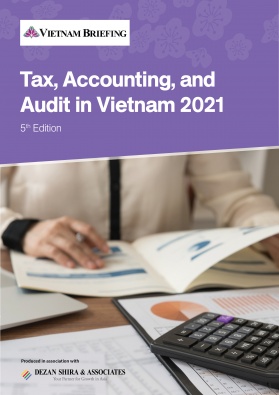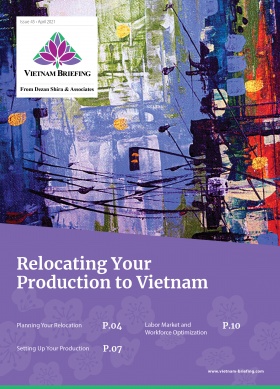Relocating Production: Comparing Vietnam and its Regional Peers
- Vietnam’s supply chains are constantly evolving thanks to high growth and where it fits in international trade.
- While Vietnam has emerged as an effective China plus location, we take a look at its peers and compare them as alternate production sites.
- We conclude with factors peculiar to Vietnam and what investors need to know when considering the country as a production location.
Vietnam’s supply chains have significantly evolved from how they were a decade ago. Today, supply chain shifts to Vietnam are ongoing, helped in some part by the US-China trade war, as a growing number of businesses seek out ASEAN or alternate markets to invest in. Among the countries competing for investment, Vietnam has emerged as a highly effective alternative for relocation in Southeast Asia.
Vietnam’s pursuit of foreign investment, competitive costs, free trade agreements, and liberal investment environment have made it an ideal location for China-based investors seeking to reduce costs and diversify supply chains. Nevertheless, foreign investors considering the Vietnamese market need to have a clear understanding of the capacity and limitations of Vietnamese production.
Choosing to relocate operations to Vietnam will not be without its share of challenges. Manufacturers must plan how to realign their supply chains, which production elements to relocate, and the ideal market entry strategy.
Processes that should be considered during a relocation include:
- Market study;
- Initial screening;
- Preliminary due diligence and long-list locations;
- Detailed due diligence;
- Comparison model development;
- Final site selections; and
- Organizing a visit.
Regional peers compared
No doubt Vietnam has benefitted but absorbing all of China’s manufacturing is too big a task to take on given Vietnam’s size. This has resulted in manufacturers moving to different countries to supplement their China operations. But how do other countries compare?
Thailand
Aside from uncertainty regarding its political climate, investment concerns for Thailand generally relate to how the country’s strong currency affects its overbearing tourism industry, as well as a slowing economy in the face of China’s economic slowdown. While Thailand’s infrastructure is better-developed labor costs are higher than Vietnam’s. Like Vietnam, Thailand is also dependent on international trade, however, its tourism industry, which is more prominent than Vietnam’s, has suffered a serious setback due to the pandemic. While Thailand is a great investment destination, its history of coups, protests, and the current political environment are factors that need to be considered.
Indonesia
Indonesia benefits from being close to Singapore and getting investment from businesses placed there. However, it needs to better establish its trade network to attract foreign investors. Indonesia’s infrastructure, bureaucracy, and red tape are still behind Vietnam at the moment, but things are changing fast and investors have to play the long game.
Cambodia
Cambodia is seeing significant investment from China. The government has unveiled several pro-investment policies in a bid to attract investment and this seems to be paying off. However, Cambodia’s transport infrastructure remains underdeveloped. In addition, its few ports are burdened with long processing at ports and customs delays. Nevertheless, it has attained a high GDP. The garments, textiles, and footwear industry give direct competition to Vietnam.
Bangladesh
Bangladesh is the world’s second-largest readymade garment exporter, behind China. Bangladesh’s advantage is its low-cost labor. It also enjoyed duty-free market access or reduced tariffs to many developed and developing nations globally. However, Bangladesh’s infrastructure has not been able to keep and traffic in cities, such as Dhaka is significantly congested causing delays. In addition, factory conditions are poor, which have led to protests and deaths. Most recently, at least 52 people were killed in a juice factory fire in the capital Dhaka.
Myanmar
Myanmar has emerged as a popular production base for labor-intensive industries. Several Chinese companies have set up light manufacturing facilities as Vietnam undergoes economic liberalization and implements pro-investment policies. While Myanmar has low labor costs and minimum wages its infrastructure in still developing and remains inadequate. Electricity remains prone to blackouts, while traffic can be notorious. In addition, due to human rights abuses, some sanctions on Myanmar continue to remain in place, while the UN has called for further sanctions against businesses linked to the Burmese army. The present political situation in Myanmar however, following the military coup has spooked investors and the situation is unlikely to improve in the near term, which may make investments out of the question for some.
Laos
While the World Bank had stated that Laos may gradually be a key link in the regional value chain, the land-locked nation still suffers from an inadequate business environment. These include a shortage of skilled labor and infrastructure constraints. Services such as electricity, water, and logistics need to be more developed and lengthy duration for business registrations have hampered its growth, though the government is working on such factors.
The Philippines
While the Philippines’ growth has not been as strong as Vietnam’s, it is expanding at a respectable pace and has an English-speaking population superior to Vietnam’s. The country has some of the latest technology in places like Manila with an educated workforce. Nevertheless, labor and electricity costs are higher than in Vietnam and infrastructure is still not up to western standards.
How does Vietnam fare?
Dustin Daugherty, Head of North American Desk for Dezan Shira & Associates notes, “While Vietnam’s uniquely strong advantages as an investment destination for US companies have risen steadily over the past half-decade or so, it is still a rather unfamiliar market for new investors. Vietnam enjoys a high degree of regional diversity, and the North, Center, and South all have particular competitive advantages for different industries and types of businesses. In the Ho Chi Minh City area, a prospective investor will find a vibrant commercial center with a deep and diversified supply chain, whereas the Center of the country can provide cost advantages unmatched by either North or South.”
In this context, we highlight four issues in the supply chain peculiar to Vietnam.
- Vietnam’s logistics and transport infrastructure: This is still behind China’s. While the government has invested in upgrading its transport network, Vietnam continues to depend on an inadequate road network and an outdated and slow railway system. The largest road connections consist of two lanes, which can result in traffic jams. In addition, major cities, such as Hanoi and Ho Chi Minh have run out of space, resulting in serious congestion. Nevertheless, Vietnam already spends up to 5.7 percent of its GDP on infrastructure. A total investment value of US$120 billion has been planned for PPP projects in the road and power sectors.
- Vietnam’s port infrastructure: This is also lacking compared to its peers. It has 320 ports though full container load shipping to Vietnam is not fully established. According to the World Economic Forum, Vietnam ranks 80 among 139 countries in the quality of port infrastructure with an average score of 3.80 on a scale of 1 (lowest) to 7 (highest) between 2006 and 2018. This means Vietnam ranks lower than countries like China, India, Thailand, and Sri Lanka. In addition, the road and rail network around ports remains undeveloped leading to increased costs.
- Customs procedures: When importing or exports goods, customs is one of the most vital considerations in the supply chain network. Goods that are imported and exported are subject to the relevant customs clearance standards. Businesses should be aware of the relevant duties to avoid unexpected price shocks. Customs processing can take time and goods held up if the relevant documents or permits are not in place. Businesses should also consider applying for priority customs treatment to ensure minimal delays in their supply chains.
- Suppliers: Vietnam’s supplier market is still developing. Products that required a high level of technical precision, like aerospace parts, for example, might be harder to source in Vietnam. A simple search for suppliers of plastic, for example, on an online website yields a small number of potential Vietnam manufacturers as compared to China. Businesses in Vietnam must understand the capacity of the local market to support their production needs.
Businesses must look at ways to diversify and reduce their dependence on one single location as a production site or source of raw materials. While these changes are challenging, they are necessary and will require companies to adapt. Smart investors have already been working with suppliers to diversify and firms can negotiate for some items, but in the short term, costs are likely to increase. Investors have to play the long game and look at Vietnam as a long term investment to be able to manage risks. While Vietnam stands to be affected by the pandemic, its overall positive growth rate provides a partial buffer.
About Us
Vietnam Briefing is produced by Dezan Shira & Associates. The firm assists foreign investors throughout Asia from offices across the world, including in Hanoi, Ho Chi Minh City, and Da Nang. Readers may write to vietnam@dezshira.com for more support on doing business in Vietnam.
We also maintain offices or have alliance partners assisting foreign investors in Indonesia, India, Singapore, The Philippines, Malaysia, Thailand, Italy, Germany, and the United States, in addition to practices in Bangladesh and Russia.
- Previous Article Vietnam Issues Support Package for Employers, Employees Hit by Fourth Wave: Resolution 68
- Next Article Investing in Ben Tre Province: What Investors Need to Know







